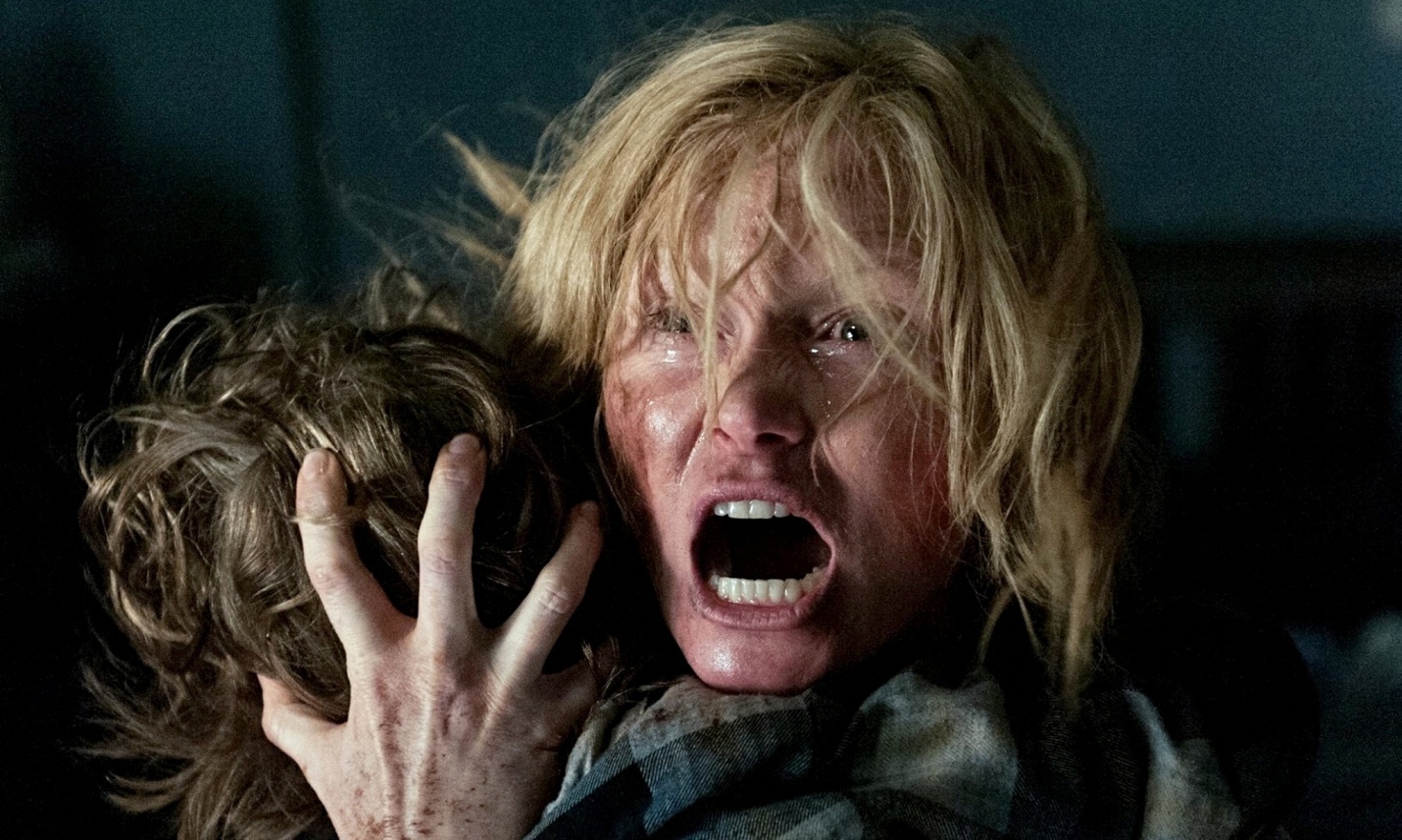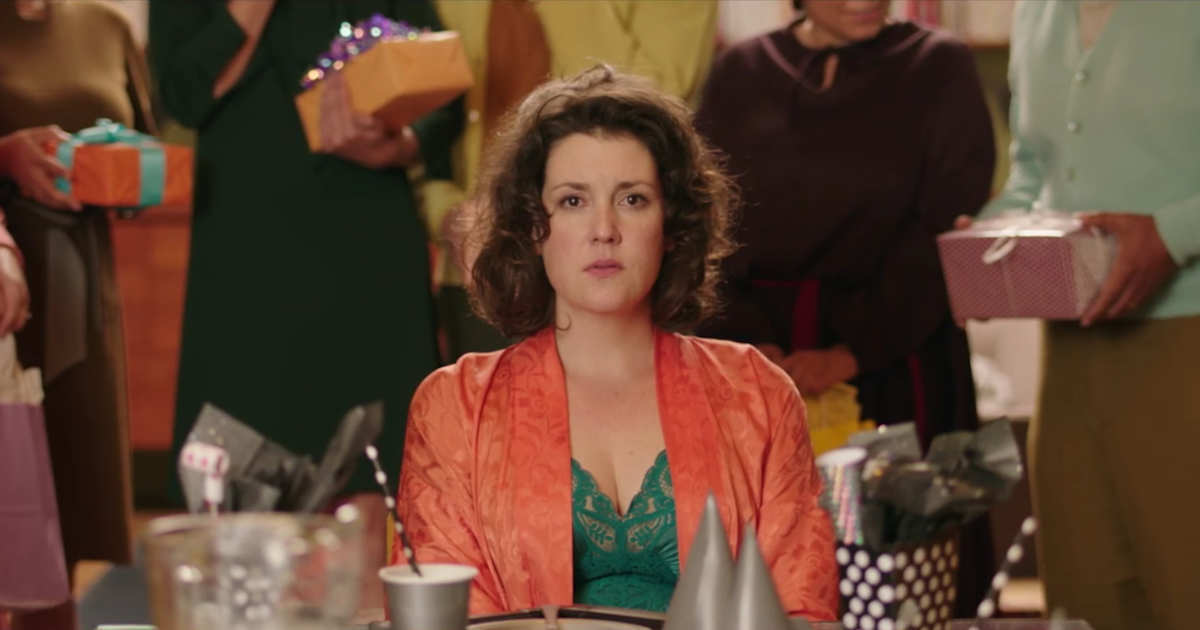Women have always been horror’s lifeblood. After all, one of our most iconic monsters was created one dark stormy night by a young woman who had (according to legend) grown weary of Lord Byron’s threesomes. That monster was, of course, Frankenstein’s creature, and our menage a trois-disdaining wunderkind none other than Mary Shelley. Fast forward a few hundred years through the genre, and we’ve amassed a veritable Lilith’s Fair of horror femmes headlined by women like Carrie, Ripley, Regan, and Nancy.
But still, female horror icons largely exist in front of the camera. Even the canon’s essentially feminine narratives, like Rosemary’s Baby, The Descent, Let the Right One In, and Misery come from the minds of men. But the past few years have brought us a new generation of horror classics about women, by women. As films like Raw, Prevenge, XX, The Lure, and The Love Witch incite critical adoration and medical attention alike, women horror directors are having, as they say, a moment.
Videos by VICE
“Female horror directors and the things they are making are getting increasingly harder to ignore,” says Alexandra West, horror journalist and co-host of horror podcast The Faculty of Horror. “The audience and the fan reception and the industry reception is so strong, that to plug your ears and say ‘this is not a thing’ automatically makes you a sort of dinosaur. And in the industry, that’s something you never want to be.”
Read more: Why Some Anxious People Find Comfort in Horror Movies
“The Babadook definitely forced the way and really opened people’s eyes to thinking about opportunities for women in the genre,” says Olivia Howe, one half of the Final Girls, a London-based feminist horror collective that holds screenings and Q&As. The tale of a grieving widow tormented by her douchebag six-year-old and a pop-up book villain, the 2014 film had all the humble trappings of a killer underdog story: lowly birth (it was an Australian-Canadian indie), a $2.5 million budget plus scraps raised on Kickstarter, a first-time director. But that director was one Lars Von Trier-trained Jennifer Kent, and her feature debut ended up a Sundance darling, scoring 98 percent on Rotten Tomatoes and given the thumbs up by Exorcist director William Friedkin, who declared he had “never seen a more terrifying film.”

Essie Davis in The Babadook (2014). Film still via Screen Australia
Good, scary horror movies by women, of course, predate The Babadook, whose release coincided with another Sundance favorite, Ana Lily Amirpour’s resolutely emo Iranian vampire spaghetti western A Girl Walks Home Alone at Night. Just two years before that we were graced with Jen and Sylvia Soska’s American Mary, a wryly gothic rape-revenge saga set in the underground body mod scene. And history traces a pretty impressive pedigree back through Kathryn Bigelow’s Near Dark (1987), Mary Lambert’s Pet Sematary (1989), Cindy Sherman’s Office Killer (1997), Antonia Bird’s Ravenous (1999), and, obviously, Mary Harron’s American Psycho (2000).
Meanwhile, the aggressively transgressive New French Extremity cinematic movement has considered Claire Denis’ Trouble Every Day, Marina De Van’s In My Skin, Virginie Despentes and Coralie Trinh Thi’s Baise-moi, and a good chunk of Catherine Breillat’s filmography among its canon since the beginning. But with a few high-profile exceptions, most of these pre-Babadook films only claim a cult following outside of horror nerd-dom.
“I don’t think there’s necessarily an uptick [in female horror creators],” says longtime horror director and producer Roxanne Benjamin, whose resume includes Southbound and the all-female horror anthology XX helmed by Jennifer’s Body and The Invitation director Karyn Kusama. “But I would say there’s probably more of an awareness of that now, mostly from the spotlight that’s being shined on the disparity in the number of women directors versus male directors overall.”
I didn’t want people to look at me and think Penthouse. I want them to look at me and have nightmares.
Certainly, this new golden age of women horror directors has been deemed worthy of trend pieces by the Guardian and Rolling Stone. “We’ve had a real resurgence of women who are making horror but who are, even more importantly, being recognized for horror,” says Aviva Briefel, a Bowdoin College professor of English and cinema studies who specializes in women and horror.
It’s a huge development for a genre long been misperceived as a boys’ club. While this reputation certainly contains historical truth—longtime horror critic Maitland McDonagh told Forbes she was often the only girl at screenings during the early 70s—it’s been obsolete for quite a while. Back in 2003, the LA Times reported that at least half of horror audiences consisted of women under 25. And in 2009, Entertainment Weekly declared “the genre’s biggest constituency of die-hard fans is women.” Clearly, women have been nerding out over horror for a hot second, so why have female horror directors seized this moment in particular?
For one, West says, the internet has heralded more female horror film journalists than she’s ever seen before, helping to change the conversation. Briefel also cites cheaper means of production and different avenues of distribution. “There’s also this greater grey area between arthouse and horror,” says the Final Girls’ Anna Bogutskaya, which means that these films garner more support from the indie community at film festivals. Critics, indeed, have dubbed the mid-2010’s the rebirth of horror as Art, heaping praise on films like The VVitch, Goodnight Mommy, Under the Skin, It Follows, Kill List, and Get Out.

Melanie Lynskey in Annie Clark’s horror short The Birthday Party, from XX. Still via XYZ Films
Likewise, this wave of female-directed horror films is mostly indie or foreign, typically generating buzz on the festival circuit before landing big distributors. This makes for plenty of high-risk, high-brow slow burners with arthouse ambitions, like XX’s short film debut of Annie Clark (a.k.a. St. Vincent), who, delightfully extra as always, cites Michael Haneke and Todd Solondz as main influences. Having been the cinematic subject of the male gaze for far too long, women are now gazing back with brutal genre subversions like the shit-talking fetus in Alice Lowe’s Prevenge, cannibalism-triggering Brazilian waxes in Julia Ducournau’s Raw, and a sorceress’ campily villainous thirst for dick in Anna Biller’s The Love Witch.
So what’s a budding female horror filmmaker to do? To get an idea, I reached out to the directors of American Mary, Canadian horror veterans The Soska Sisters, aka the Twisted Twins, who made their debut, Dead Hooker in a Trunk, in 2009 for $2,500. Every February, they run a blood drive to support women in horror. “I didn’t want people to look at me and think Penthouse,” Sylvia Soska told me. “I want them to look at me and have nightmares.”
Today’s women-fronted horror films would probably not have been greenlit in the past, they say. “Every time we said we were horror directors, people would look at us and go, ‘Oh, honey, you don’t have to do that,’” says Soska. “It was almost like they were talking about how I clean up roadkill for the city, and it was this weird preconceived notion that horror movies and women don’t mix.”
For More Stories Like This, Sign Up for Our Newsletter
But as women horror directors rack up glitzy magazine interviews, fawning reviews, and 90th percentile Rotten Tomatoes ratings, it’s become clear that those who still believe that stereotype are, as West says, “dinosaurs.” And if box office bombings of tepid blockbusters like The Great Wall and Ghost in the Shell are any indication, being a dinosaur no longer pays.
“You can only oppress a gender for so long,” says Jen Soska. “Women have been told ‘no, no, no’ for so long that they’re like, you know what? Fuck you. I’m serious about this, I’m gonna be undeniable. For women to get recognized, we have to set ourselves on fire. There’s a lot of women setting themselves on fire and going, no, I’m not gonna take this anymore. A revolution has started.”
More
From VICE
-

Screenshot: Joure Visser -

Screenshot: Sunscorched Studios -

Nick Fuentes, a white supremacist streamer and US social media pundit, appears to mace 57-year-old Marla Rose, a 57-year-old on his doorstep on Sunday, November 10 (Imagery courtesy of Marla Rose) -

(Photo by John Lamb / Getty Images)
